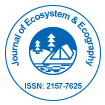Research Article
Species Composition, Diversity and Population Dyanamics of Phytoplankton at Saderkot in Wular Lake, Kashmir
Aaliya Ismat Baba* and Ashok K PanditDepartment of Environmental Science, University of Kashmir, Srinagar-190006, India
- *Corresponding Author:
- Aaliya Ismat Baba
Department of Environmental Science
University of Kashmir, Srinagar-190006, India
Tel: 91194242987
E-mail: babaaaliya@gmail.com
Received date: December 24, 2013; Accepted date: January 29, 2014; Published date: February 10, 2014
Citation: Baba AI, Pandit AK (2014) Species Composition, Diversity and Population Dyanamics of Phytoplankton at Saderkot in Wular Lake, Kashmir. J Ecosys Ecograph 4:142. doi:10.4172/2157-7625.1000142
Copyright: © 2014 Baba AI, et al. This is an open-access article distributed under the terms of the Creative Commons Attribution License, which permits unrestricted use, distribution, and reproduction in any medium, provided the original author and source are credited.
Abstract
The present study deals with the general ecological studies on phytoplankton community in terms of species composition and density at Saderkot in Wular Lake, Kashmir. A total of 70 phytoplankton taxa were identified representing four classes namely Bacillariophyceae (41), Chlorophyceae (12) and Cyanophyceae (10) and Euglenophyceae (7). The percentage contribution of density also followed the same pattern with Bacillariophyceae contributing 56 %, followed by Chlorophyceae, (20 %); Cyanophyceae (17 %) and Euglenophyceae (7 %) in a decreasing order. The dominance pattern of species in the population density were Diatoma sp. ˃ Navicula radiosa ˃ Fragilariforma virescens ˃ Fragilaria capucina ˃ Navicula angusta ˃Amphora ovalis among Bacillariphyceae, Cosmarium monomazum ˃ Spirogyra sp. ˃ Pediastrum biradiatum among Chlorophyceae, Oscillatoria limosa ˃ Phormidium mucosum ˃ Anabaena torulosa among Cyanophyceae and Euglena acus ˃ Phacus suecicia among Euglenophyceae. Further, phytoplankton populations showed two peaks, one in summer and the other in autumn, with Bacillariophyceae dominating in autumn and winter, Chlorophyceae dominating in spring and both Cyanophyceae and Euglenophyceae dominating in summer. Highest values of Shannon-Wiener Index were recorded for Bacillariophycece (3.424) while the highest evenness (J′) value (0.9302) was registered for Euglenophyceae. Further, highest values for species dominance were obtained for Cyanophyceae (0.2485) and lowest for Baccilariophyceae (0.04154).

